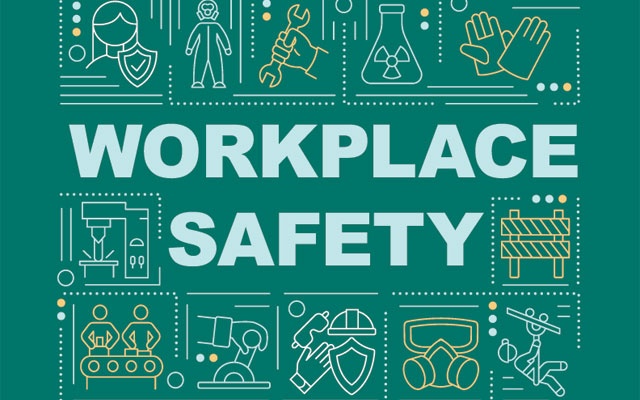When discussing any topic, there is often information that may be left out or not completely pertinent to any specific component of the discussion. However, that does not meant that it holds no value to those involved or should be dismissed as nonsense. This is often information that a person can use to learn about the topic on their own or that they can apply in very specific situations. With unlawful employee termination, this can include things that you may not think about using or doing until well after the fact. This article will explore some of the information that may be of value during a wrongful termination situation. This includes some resources to turn to, additional information on benefits you could receive with your termination, and what to do with all of the paperwork that comes with being fired.
Resources To Turn To
Depending on the circumstances of a wrongful termination, there are some resources that both the employer and the employee can turn to. These are things that can help you navigate the situation and understand what is happening. The availability of these resources is largely universal throughout the U.S., although there may be restrictions based on location access or circumstance. In addition to what is listed here, you may have local or industry-related resources that can provide similar assistance for wrongful termination. Feel free to research on your own to expand your list of available resources and to give yourself the best shot in a wrongful termination.
• The U.S. Department of Labor (DOL)-The DOL governs any and all federal regulations tied to employment, including those involved with termination and employee rights.1 It's their job to establish what is and isn't acceptable in the workforce in terms of what employers must do. Several of the organizations that enforce certain workplace regulations, like OSHA, are a part of the DOL and will operate as a part of the organization's hierarchy. The resources that the DOL can provide in an unlawful termination are mostly information based; reference material on rights, benefits, discrimination laws, and other things that can be used in determining the legality of your termination and in contesting it.2 You can learn more about the DOL and see what they have to offer by visiting their website at www.dol.gov.
• The Occupational Safety and Health Administration (OSHA)-OSHA is a DOL associated organization that focuses on workplace safety and any related laws and regulations. The organization was created as a part of the Occupational Safety and Health Act of 1970, which set forth the safety standards that businesses throughout the country are required to comply with.3 So what does OSHA have to do with unlawful termination? Primarily, OSHA's involvement would be with cases of retaliation against employees who reported safety violations or other instances that violated the organization's regulations. They are an excellent source of information about whistleblowing and other worker's rights concerns, as employee complaints and reports to OSHA are unfortunately prone to retaliation tactics.4 More information can be found at www.osha.gov.
• The Equal Employment Opportunity Commission (EEOC)-The EEOC is a DOJ associated organization, one that specifically focuses on discrimination and unfair treatment in the workplace. Not only do they maintain and govern any laws and regulations on discrimination and employee treatment, they also investigate claims, offer anti-discrimination and harassment training, document cases throughout the U.S.5 If it sounds familiar, it's because the EEOC is where any complaints of wrongful termination tied to discrimination, retaliation, and rights violations are submitted. As a federal organization, the EEOC can be used as a resource by anyone in the U.S. The EEOC has 53 field offices spread out over 15 districts in addition to the Washington, D.C. headquarters.6 To file a complaint, find a field office, or just to check out what the EEOC has to offer, visit www.eeoc.gov.
• The U.S. Department of Justice (DOJ)-The DOJ oversees the legal system and laws of the country, so it's a resource that can be used to determine the legality of a termination and when taking legal action to contest a termination. Illicit activities in the workplace can be reported to the DOJ, including those that contributed to an unlawful termination through their website (www.justice.gov) or via the OIG (Office of the Inspector General) Hotline.7 Any legal information that you may need in addressing a wrongful termination can be found through the DOJ or its associated organizations, like the EEOC as mentioned above.
• Unions-Unions can be a valuable resource because they are often full of information that is specific to the goings-on in certain industries and professions. They act as both protection and advocacy for employee rights, and may play roles similar to what HR does in certain circumstances.8 Employees who are members of a union usually have some additional resources at their disposal when it comes to lawful and unlawful terminations. This includes things like collective bargaining agreements and additional options to contest disciplinary measures.9 If you are a member of a union and you are wrongfully terminated, you have instant access to those resources-plus support from your fellow members, which can help ease some of the more stressful components of the situation.
• Assistance and Advocacy Organizations-There are organizations, most non-profits, across the country who offer assistance to people who have been fired, laid off, or are otherwise dealing with other loss of employment issues. They can help you with things like building a case, getting withheld benefits and pay, and finding legal aid. When you're faced with a difficult set of circumstances or are just not sure of what to do, these groups can help you get on the right track and provide much needed support. Nationally operating groups like Workplace Fairness (www.workplacefairness.org) or the Employee Rights Advocacy (www.employeerightsadvocacy.org) can be an option regardless of your location. Organizations on the state and local levels may also be in your area, and can be found through an internet search or via some of the other resources listed here in this article.
There's a lot of paperwork and documentation that can be produced in a termination, and even more so when it's an unlawful termination that is later contested. The stack can get higher when you add in things like regular employee files and other similar items. It's recommended that you keep all of it throughout the situation-after all, you'll likely need to refer to some of it during legal proceedings and use it to support your claim(s). But what about after, when you've moved on and the case is closed? Do you just toss it? Or are you legally required to keep it-all of it-forever?
Well, no, not forever. But you should still keep certain things. Both employers and employees should keep some documents related to an unlawful termination, based on what they are, and dispose of them properly when the time comes.
• Employee Records and Files-Employers will be expected to retain certain records, both due to legal requirements and for practical reasons. Documents related to the business' operation and existence, for example, need to be kept permanently for as long as the business exists. With employee files, they should be kept throughout the duration of the person's employment and at least 6 years after their termination.10 Things like workplace accidents and injury records should be kept a little longer (11 years), or permanently like with patents. This allows for any further usage of employee records, like references by new employers.
• Nullified Employment Contracts-Any kind of contract a business has related to labor, employment, or partnerships should never be disposed of. This includes those associated with a terminated employee and when the contract is no longer valid or has been nullified. If it is a legally binding agreement, it should be kept because it could be involved in legal proceedings and conflicts that either the employer or employee is party to. They could be destroyed years after they've been invalidated or upon the end of one of the parties (e.g. employee death), so long as there isn't any need to use it for something like a lawsuit.
• Termination Paperwork-Paperwork that is related to a termination should probably be kept for the same duration as any other employee records. That 6 year minimum retention should start when there is no longer any dispute over the termination, i.e. when there is no longer any legal action being taken. A former employee may want to keep some of their termination paperwork, such as anything that states the cause, for future reference in their career when that information needs to be disclosed.
• Legal Documents-Knowing how long to keep legal documents can be kind of tricky. There is always the possibility that a long-closed case could be reopened and any pertinent documentation will be needed. Some advocate keeping all of it, possibly creating a digital copy to save on physical space and to ensure the existence of a back-up. Some lawyers and others in the legal profession operate by a general rule of 10 years unless a document is deemed valuable enough to be kept in perpetuity.11
What Benefits Are Terminated Employees Entitled To?
Employees are entitled to certain benefits at the end of their employment regardless of why their employment is ending. There are also benefits that a person has access to because their employment has ended, which may not be something that everyone realizes. With a termination, there are three benefits that often come into play or are at least discussed depending on the circumstances.
• COBRA-The Consolidated Omnibus Budget Reconciliation Act is a federally provided benefit accessible to employees who work(ed) in businesses with at least 20 employees. It provides continued access to health insurance coverage when an employee leaves their position due to a "qualifying event". This can include layoffs, resignations/quitting, and terminations with the exception of incidences of serious misconduct.14 Under COBRA, an employee will be notified within 14 days of their employment's end of their right to have their medical coverage continued and what actions they can take.
• Unemployment-Unemployment benefits are usually reserved for those who were affected by layoffs and downsizing, or those who are struggling to find work. In certain situations, a terminated employee could be eligible for unemployment benefits. This is usually something that is determined by state, rather than federal, law.15 Your state may dictate that you are completely ineligible for unemployment benefits or for a set amount of time, called a disqualification period, depending on the seriousness of your termination's cause. Theft and other criminal activities, for example, usually make you ineligible, but it really depends on what the state's laws.
• Pensions and Retirement Funds-There is always the fear of losing retirement benefits when you're fired. The loss of a pension or 401(K), especially after years of hard work spend building it up, can be devastating and can put a person in a very difficult situation. Whether you lose some or all of your retirement funds depends on what your retirement fund plan involves. 401(K)s, for example, cannot be taken away by an employer when an employee is terminated.16 Pension plans are a little different, as an employer may be able to take back anything that they contributed to the fund during your time as their employee. However, this depends on if you and your plan are vested, which means that it is secured after a certain amount of time.17 Even being partially vested-25% or 50%, for example-means that you can retain a portion of your pension plan even if you are terminated.18


























